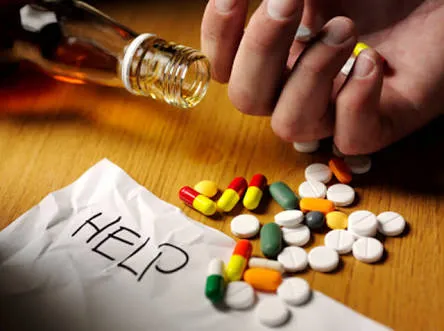
An evidence-based overview of substance use by
young people is provided in the beginning of the chapter, drawing
on statistical data whenever available and key informants otherwise. The present situation and trends are elaborated and comparative international aspects highlighted, followed by a description of
current and best practices in demand reduction programmes and
youth participation in those programmes.
When the subject of drug use comes up, it is often in relation to young people. This
makes some sense, for while there are significant drug issues among other populations, it is during the younger years that most substance use begins. If a person in
today’s world has not begun to use alcohol, tobacco or an illicit substance during this
period, it is unlikely he or she ever will. Young people in almost all countries tend to
use these substances to a greater extent and in riskier ways than do older people, and
this behaviour can result in significant problems in the short and long terms.
People use substances to satisfy a need or to serve a function. A drug may
meet certain needs or desires through its effects (including pain relief and pleasurable
feelings) or through the symbolism associated with its use (a sense of rebellion or feeling of belonging, for example). All substance-use decisions involve a weighing of benefits against risks as perceived by the individual. Young people use substances for
many of the same reasons adults do (to relieve stress or heighten enjoyment); however, there are some reasons for use that arise from needs specifically related to adolescent development. Sources of motivation include the desire to take risks, demonstrate autonomy and independence, develop values distinct from parental and societal authority, signal entry into a peer group, seek novel and exciting experiences, and
satisfy curiosity.
1 More and more young people worldwide are growing up in an environment
increasingly tolerant of various forms of substance use, both medical and non-medical. The pharmaceutical and alternative medicine industries continue to grow and to
promote a climate of “solution by ingestion”. An unprecedented level of access to
media by youth worldwide has meant that more young people than ever are “consuming” a globalized, Western dominated pop culture that tends to tolerate substance
use. The tobacco and alcohol industries have added to this environment by utilizing
their powerful marketing capacities to influence young people.
Beyond these broad influences there are always local and personal factors
involved in a young person’s decisions regarding substance use. Youth may be influenced strongly by their perception of how common or “normative” substance use is.
For example, if a young person’s friends smoke, drink or use other substances, or if there is a sense that others in the same networks do, that young person is more likely to make the same choices. Decisions on substance use are also linked to perceptions of risk associated with a particular drug.
2 As the perceived risk associated with
the use of a drug increases, rates of use decline.
3 The reverse is also true, whereby an
emerging drug may experience a “honeymoon period” during which there is little information available about risks or harm.
4 Some young people may use substances as
consumer items, along with clothes and music, to establish an identity or image for
themselves.
5 Some youth do not choose substance use per sec, but rather opt for a
lifestyle within which substance use goes hand in hand with alienation, rebellion and
the search for freedom and friendship.
6 Adolescent attitudes and beliefs about substance use and risk tend to
change rapidly, with tolerance levels rising as adolescence progresses. Youth, to a
greater extent than adults, tend to minimize the risks linked to their own substance use, with the tendency more pronounced among young men than among young
women.
7 It has long been acknowledged that young people typically give less attention to the long-term risks associated with substance use than they do to the more
immediate consequences.
8 In recent years, observers of substance use patterns have begun to distinguish
between youth living in difficult circumstances and “mainstream” youth, who generally have more opportunities, options, and support. The former group includes many
youth living in developing countries, but also youth living out of the mainstream in the
developed world. For many mainstream youth, substance use is increasingly woven
into a leisure culture in which intoxication is viewed as a “time out” from the normal
rules.
9 Use of substances by youth living outside the mainstream a group often
termed “especially vulnerable” tends to be aimed more at relieving the pressures
deriving from difficult circumstances, which may include physical or emotional pain or
longer work hours, unemployment, neglect, violence, homelessness, sexual abuse or
war. While the lines between these two worlds are blurred at times, the associated
issues and challenges are quite different.
